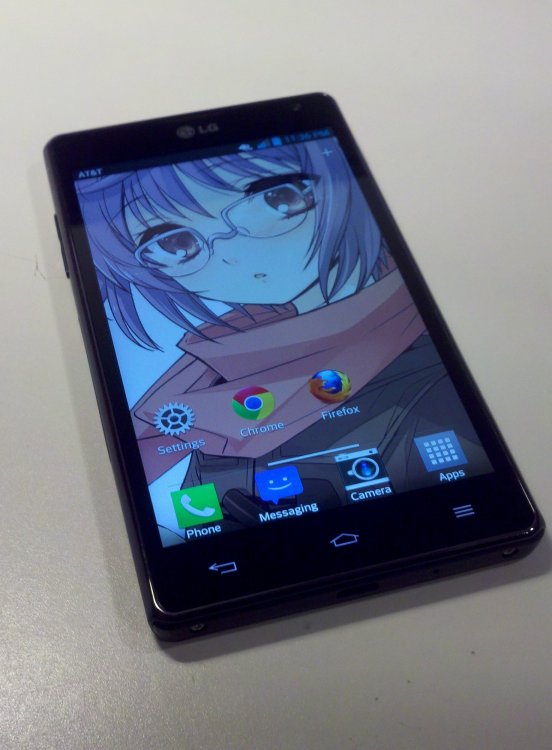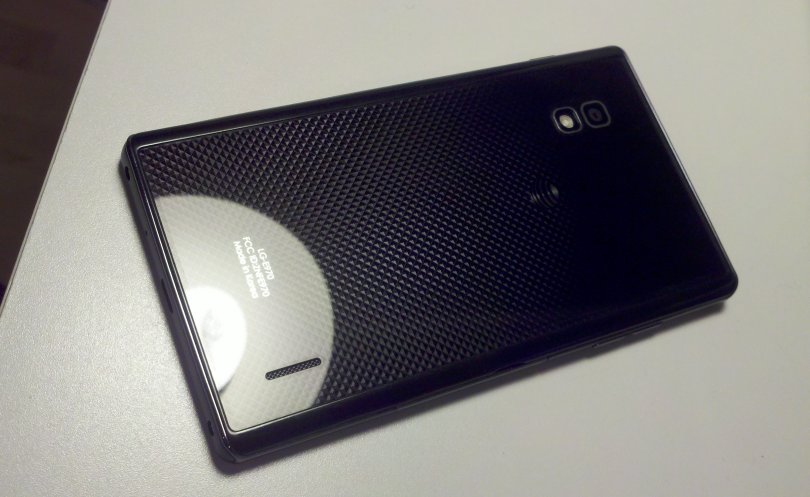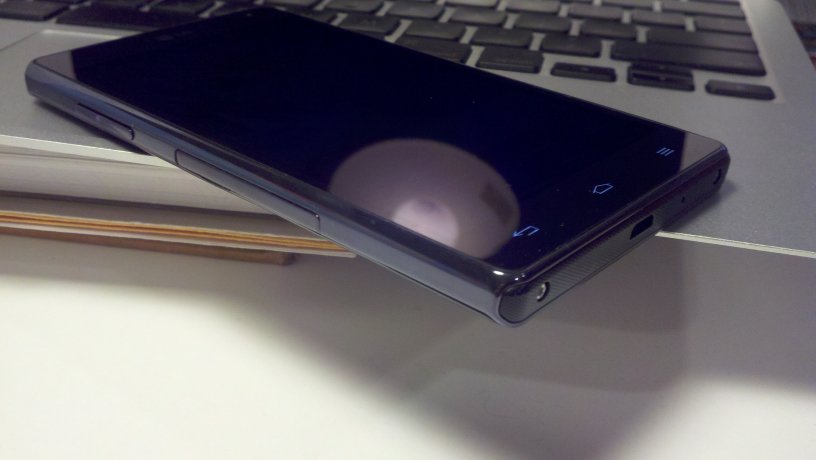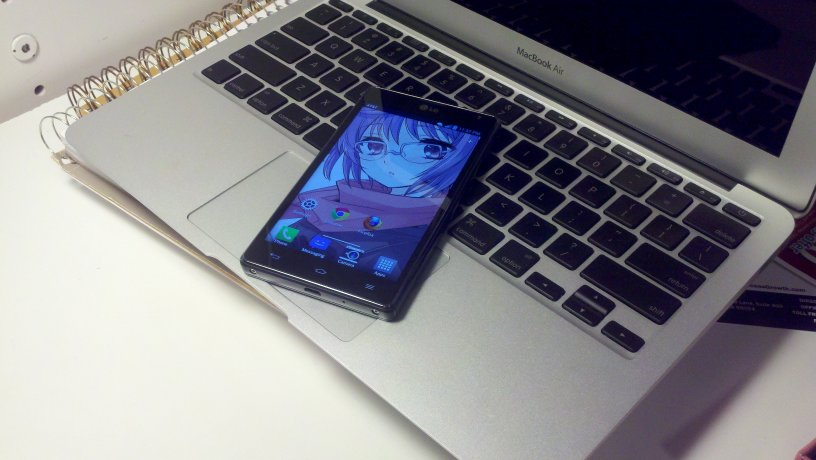So I call these posts “reviews”, but these aren’t meant to be nearly as comprehensive as formal hardware reviews by any stretch of the imagination. It’s really just my thoughts on stuff that’s important to me, and if that does or doesn’t help anyone, so be it.

My last phone was the venerable Droid X, about which I haven’t actually written since I got it. That’s really a good and bad thing: on one hand, the phone has really done everything I need it to do, but on the other hand, I’m not really much of a phone power user. A large part of the reason I’m actually switching is because my contract expired in August and my family is changing over to one of these bulk plans (I think we’ll have 8 of 10 lines when all is said and done) from AT&T, and my Verizon Droid X wouldn’t work on the AT&T network.
I didn’t really have a phone in mind as I’m not really following the phone market. Phones just aren’t that interesting to me yet: I appreciate everything a good smartphone can do, but at the same time, I’d much, much rather use a conventional laptop whenever possible. As of now I just don’t think the smartphone experience is that good in general, and that goes for all phones on all platforms. Either way, it was fairly easy to figure out what not to get from the stock of maybe 40ish AT&T offerings at the time.
Anything Windows Phone: I’m actual open to trying the Microsoft platform, but it’s still kind of immature and kind of a transition period. Plus a lot of the devices are ugly and running on fairly dated hardware as per Microsoft’s very stringent specifications.
Anything Apple: I like Apple in general, but I hate iOS and how it locks everything down harder than the other guys. Both the iPhone 4 and 5 are still a little small too. I need something at least as big as the Droid X because small keyboards suck (at this point I’m also convinced that the iPhone 5 looks cheap and feels cheap, and that Steve Jobs, had he still been alive, would not have let the thing go to market).
Anything Samsung Galaxy: Samsung is kind of the king of Android and there’s a lot of choice here including the Note 2 and the S III. Some of them are the right size with the right features, but I don’t like Samsung’s curvy aesthetic or the plasticky(sp?) finish.
Anything Else Android: Too small and/or comes from a manufacturer you’ve never heard of. Not in this bucket was actually the Nexus 4, which was basically my only other serious contender as it’s built on the same LG platform as the Optimus G.

The Optimus beat the Nexus because it was a little easier to get, a little cheaper on contract, a little better looking, and a little bit more full-featured. It won against everything Samsung simply due to aesthetic and form-factor preferences. I like how it’s flat and square and just doesn’t really have any funny business going for it. The phone is the same height as the Droid X, and just a couple millimeters wider, but the max thickness is greatly reduced due to the lack of that goddamn “camera bump”. It’s also a bit lighter (5.1oz to the Droid X’s 5.5oz according to Wiki).
I didn’t give much thought about the glass back until I brought it home after the first day. Previously when I put my stuff down on my desk, I would put my phone on top of my wallet to save a little bit of desk space. This works great with the Droid X because the entire exterior has that rubberized paint, but the Optimus always slides off! At the same time, I’m hoping that the glass is more resistant to wear and tear; the rubberized finish on my Droid X was basically destroyed after two years in the same pocket as my keys.
I slightly regret not taking a picture of both phones side by side, but I’m not sure how that would’ve worked without a discrete camera as I was using the Droid X to take pictures of the Optimus and vice versa.

So about the Optimus G itself: this is a flagship phone, and it has all the features of a flagship phone including a quad-core Qualcomm SoC, 2GB of RAM (more than my first three laptops), 32GB of storage (16GB internal, 16GB SDHC), a 720 x 1280 display, an 8MP camera, and a “2100mAH”* battery. I believe there is also a version with a “beefier” (read: moar pixels) camera, but said version also has a “bump” to accommodate it, which for me ruins the aesthetic of the entire phone. Thank you AT&T for going with the 8MP version.
I put an asterisk next to 2100mAH because I want to say I hate how batteries are rated throughout the tech industry. Nobody wants to come out out and say how many WHr (or even better, Joules) of energy their battery contains: the laptop guys go about with “cell count”, and the phone guys go around with “mAH”, both of which are useless in determining the actual energy capacity of the battery. I bring this up because some sources are saying the battery is 2100mAH, and some are saying 1500mAH, but these could both have the same capacity at different voltages.
I’m using a free app called “Battery Monitor Widget” to do just that. It reports that my battery is 1500mAH at about 4V, giving a total energy capacity of about 6WHr. For comparison, the average laptop battery is about 50WHr. It also reports an mA figure with which you can determine actual power consumption, which varies by almost two orders of magnitude depending on what you do. I’ve seen standby current in the single-digit range, idle power with the screen on in the 200mA range, and a full-load current up to 1000mA. Plugging and chugging the numbers gets you 40MW, 800MW, and 4000MW, and calculated runtimes of 150Hrs in standby, 7.5Hrs in “idle”, and just 1.5Hrs at full load!
These numbers are at least in the same order of magnitude as the advertised standby and talk numbers (about 300Hrs and 10Hrs).

The above is a random picture taken with the camera. It seems to be alright, but I wasn’t really blown away. One thing I have noticed is that low-light pictures are a little yellow-tinted. It’s difficult for me to make a straight comparison of the camera hardware because I find it harder to take good pictures with this phone. On the Droid X there was a discrete “take picture” button on the outside of the phone: it was easy for me to hold the phone steady and press this button. On the Optimus G, I have to hit the virtual “take picture” button on the screen: it is way harder for me to hold the phone steady and press that button. At the very least I think both cameras are at least comparable and sufficient for all the pictures I need to take (mainly eBay stock).
I hate how the camera industry advertises cameras by “megapixels”, because more megapixels doesn’t at all necessarily make one camera better than another.
I was really looking forward to having the 720p screen and a “real” browser (Chrome) such that I could finally have something close to my desktop browsing experience with adblock on my phone. Lo behold Android Chrome doesn’t support extensions! What the heck man. I installed FireFox for Android and I still had to download an additional app to make the phone load non-mobile versions of websites. Even then FireFox for Android adblock doesn’t seem to work as well as the desktop version…

I suspect that part of the reason they want to force this stuff (mobile versions of websites, etc) on you is that despite the fact that a lot of people seem to be moving towards phones and tablets as a primary computing device, these things are still slow. Looking at the Notebookcheck CPU benchmark list (you have to enable showing “legacy” CPUs), the Qualcomm Snapdragon S4 Pro is ranked 601 out of 658, where everything above it are traditional x86 CPUs made in the last five to six years. Obviously these are really rough rankings and not by any means all-inclusive of the x86 or ARM space, but even the never-has-been-fast SU9300 in my Macbook Air is still more than 200 spots ahead at 403. The Pentium M 740 I had in my now ancient HP TC4200 is 456.
And this isn’t yet like my old SSD versus a top-of-the-line SSD where I can’t feel the nominal 3x to 4x difference; many web pages load noticeably faster on my laptop(s) using the phone’s mobile hotspot feature (which is really, really handy) than on the phone itself suggesting to me that network speed isn’t yet the bottleneck.
So if it sounds like I’m lacking enthusiasm for the phone, it’s not because it’s a bad phone, it’s because I lack enthusiasm for all phones (and don’t get me started on tablets). I assume this will change as this industry continues to mature, but we’ll have to see.